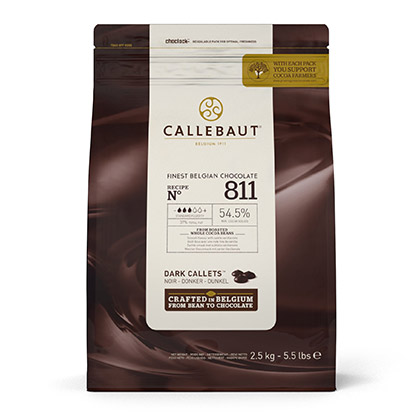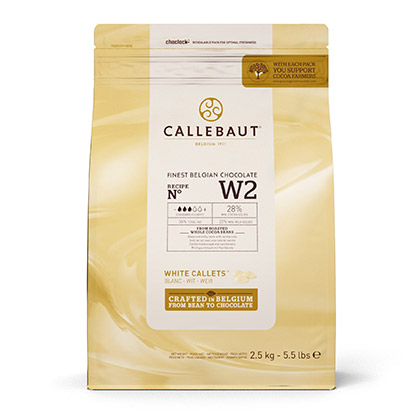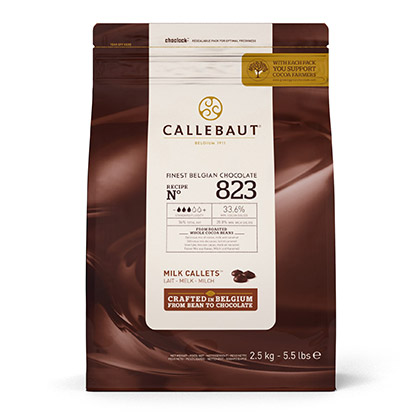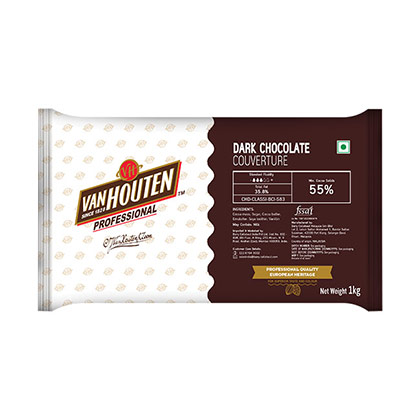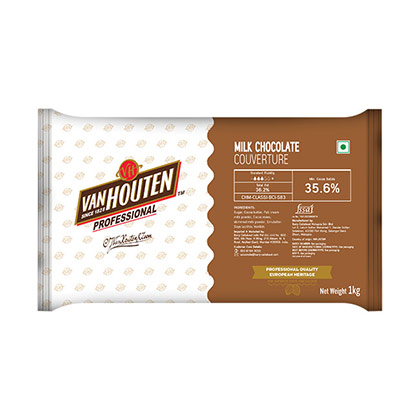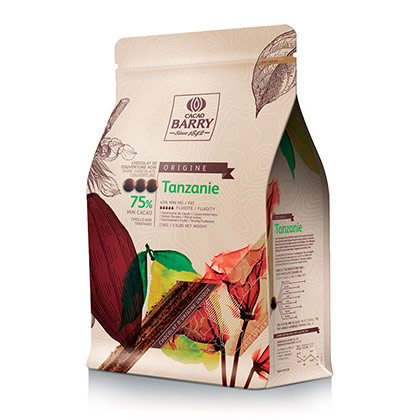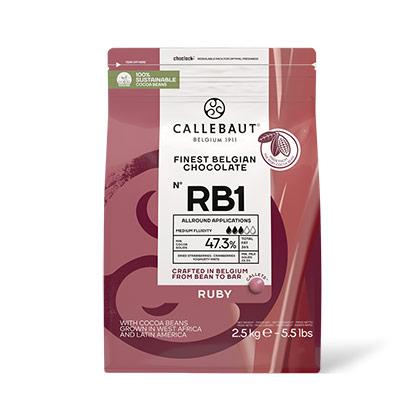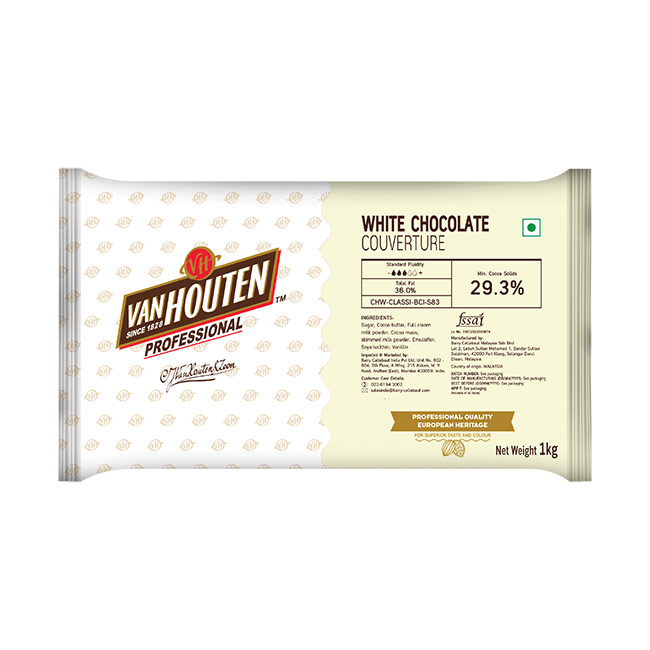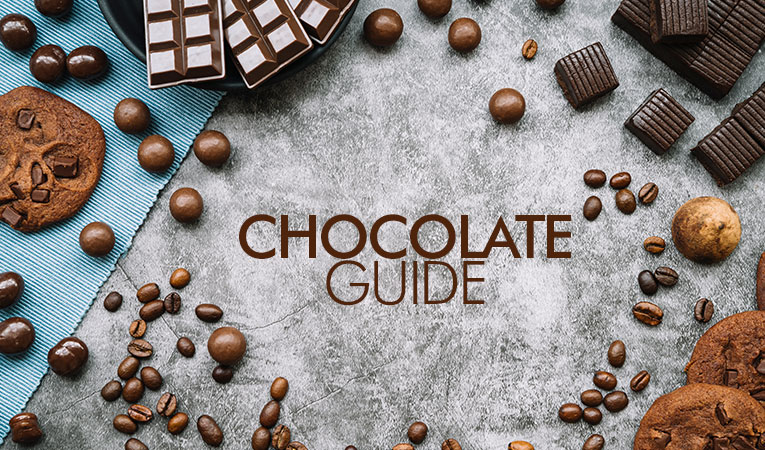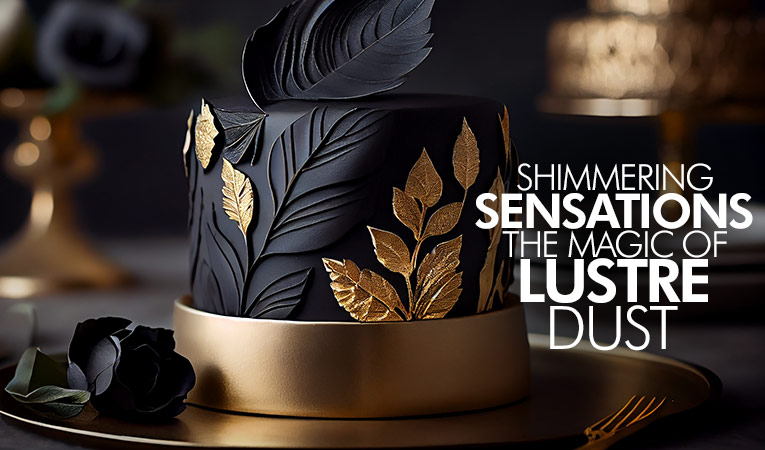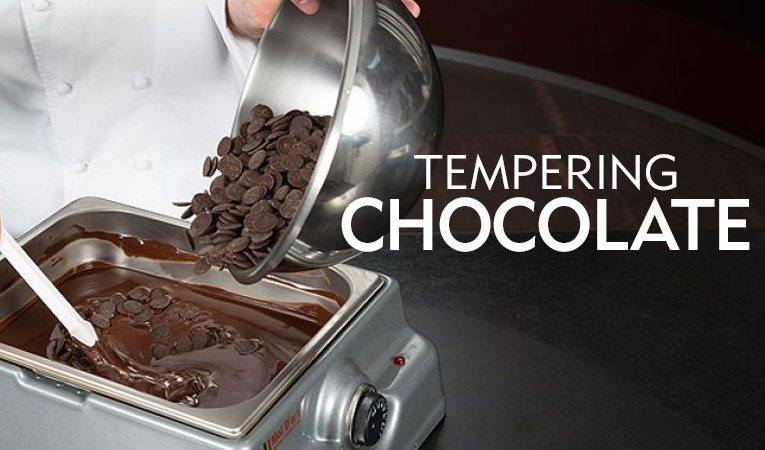Couverture Chocolate 101: Everything you need to Know
25-05-2025

Couverture Chocolate is a premium-quality chocolate made with a higher percentage of cocoa butter and finely ground cocoa solids. It is the gold standard for professionals and passionate home bakers who seek rich flavor, glossy finishes, and that signature snap in their chocolate creations. Whether you’re making truffles, ganache, or elegant chocolate decorations, couverture offers unmatched results.
What sets couverture apart from regular or compound is its composition and performance. Compound often contains vegetable fats, which makes it easier to use but compromises taste and texture. In contrast, couverture chocolate contains only cocoa butter - delivering a smoother melt, cleaner bite, and a refined flavor profile. While it requires proper tempering to achieve its full potential, the reward is chocolate that looks beautiful and tastes exceptional.
This blog will guide you through everything you need to know about couverture chocolate - from how to temper and store it correctly to choosing the best brands in India, including Callebaut , Cacao Barry and Van Houten. You’ll also find answers to common FAQs, expert handling tips, and five delicious recipes to help you get started. If you're new to couverture, check out our helpful guide on How to Use Couverture Chocolate for Baking at Home for essential techniques and tools.
Let’s dive into the delicious, versatile world of couverture - where professional results are just a recipe away.

What Makes Couverture Chocolate Special?
If you've ever wondered why some chocolates melt so smoothly, snap so cleanly, and taste so intensely rich - there's a good chance you're experiencing the excellence of couverture. This isn’t your average supermarket chocolate. Couverture is crafted for performance, delivering both flavor and finesse that ordinary chocolate simply can’t match.
High Cocoa Butter Content : One of the most defining traits of couverture chocolate is its elevated cocoa butter content - typically between 31% and 39%. This higher fat content gives couverture a silkier texture, luxurious mouthfeel, and superior workability. It melts evenly, coats perfectly, and creates a glossy finish that’s a hallmark of fine chocolate.
Refined Texture and Flawless Snap : Unlike compound, which replaces cocoa butter with vegetable fats, couverture undergoes a precise refining and conching process. This results in a smoother, finer texture and a satisfying snap when broken or bitten into. It’s why couverture is the top choice for professionals making molded chocolates or crisp shells.
Ideal for Tempering and Molding : The high-quality fat structure in couverture makes it ideal for tempering - a technique that aligns the cocoa butter crystals for shine, snap, and stability. Once tempered, it’s perfect for applications like chocolate bars, pralines, truffles, and dipped fruits. The shine it delivers is unmistakable and highly valued in artisanal and commercial chocolate-making.
Complex Flavor Profiles : With its high cocoa content and origin-specific sourcing, couverture offers deep, layered flavors - from earthy and bitter to fruity and floral. Whether dark, milk, or white, each variety maintains a balance of sweetness, acidity, and richness that elevates any dessert or confection.
To truly appreciate the quality and performance of couverture chocolate, it’s important to understand how its ingredients and structure differ from regular chocolate. Its superior texture, shine, and flavor make it an essential ingredient for high-end desserts and confections. For more detailed answers to common questions, be sure to read our dedicated blog on FAQs About Couverture Chocolate Answered.
How to Work With Couverture Chocolate?
Working with Couverture Chocolate is both a skill and an art that requires precision, patience, and the right technique. Due to its high cocoa butter content, couverture offers exceptional shine, snap, and smoothness when handled correctly. To unlock its full potential, proper melting, tempering, and handling are essential - making it a favorite among professionals and serious home bakers alike.
- Tempering is the process of heating and cooling chocolate to align its cocoa butter crystals. This is critical for couverture, as it ensures the chocolate sets with shine, snap, and stability. Without tempering, couverture can turn dull, streaky, or soft, which affects both appearance and texture.
- You'll need some basic tools to get started: a digital thermometer, a heatproof bowl, a silicone spatula, a double boiler or microwave, and optionally, a marble slab for table top tempering. Ensure all tools are dry - moisture can cause chocolate to seize and become grainy.
- There are three commonly used tempering methods:
- Double Boiler Method: melt chocolate gently over simmering water, stirring constantly.
- Microwave Method: chop chocolate and heat in short bursts at low power, stirring in between.
- Table Top Method: pour melted chocolate onto a marble surface, cool it by spreading, and return it to the bowl.
- Melting temperature for Chocolate is approximately 40°C. Cool it to a working range between 29°C and 32°C depending on the chocolate type - dark, milk, or white. For detailed step-by-step tempering techniques, refer to our blog on Top 6 Tempering Chocolate Methods Everyone Should Know.
- Avoid common mistakes such as overheating, introducing moisture, skipping temperature checks, or using greasy molds. Always work in a cool, dry space and give the chocolate time to set properly.
- To test if your Chocolate is tempered, dip a knife or spoon into the chocolate and let it rest for 3–5 minutes. If it sets with a shiny, firm finish, it’s ready. If not, it may need to be re-tempered.
- Once tempered, use couverture for a wide range of applications. Pour it into molds for bonbons and bars. Dip fruits, cookies, or truffles for a smooth coating. Drizzle or pipe for elegant decorations on plated desserts or cakes. Work quickly - tempered chocolate begins setting as it cools.
Mastering how to work with Chocolate opens up endless possibilities for creating bakery-quality confections at home or in a professional kitchen. With practice and the right technique, you’ll consistently achieve rich, glossy, and beautiful chocolate results.

Baking with Couverture Chocolate at Home
Baking with Couverture Chocolate at home can elevate your desserts from simple to exceptional, but it requires technique, attention, and the right conditions. Unlike compound, couverture contains a higher percentage of cocoa butter, which gives it superior flavor and texture - yet also makes it more sensitive to temperature, moisture, and handling.
One of the biggest challenges home bakers face is managing heat. Couverture must be melted gently, ideally over a double boiler or at low microwave power. Direct heat, steam, or uneven mixing can easily cause the chocolate to seize or burn. Ambient humidity and water contact are also common culprits behind texture failure, especially during mixing or melting.
Tempering is another technique that, while not always needed for batters, is essential when using couverture for finishing touches like glazes, drips, or chocolate decor. Though tempering can sound intimidating, it’s entirely doable at home with a thermometer and practice. When done right, tempered chocolate sets with a crisp snap and glossy shine, adding a polished finish to your creations.
Oven variations and ingredient temperatures also play a role. Couverture-rich batters may bake faster or retain more moisture, so it’s important to monitor doneness and avoid overbaking. Mixing techniques also matter - overmixing can break emulsions or cause dense results.
To work more effectively with couverture at home, keep these tips in mind:
- Chop couverture into small, uniform pieces before melting
- Use a digital thermometer to monitor temperature accurately
- Melt gently using a double boiler or low microwave heat in short intervals
- Prevent water or steam contact to avoid seizing
- Allow melted chocolate to cool before adding to eggs or emulsions
- Use room temperature ingredients to ensure smooth blending
- Mix batters gently once chocolate is added to avoid deflating air
- Line pans well, as couverture can become sticky once cooled
- Store leftovers in an airtight container and re-temper before reuse
With practice and precision, baking with Couverture Chocolate at home becomes an enjoyable and rewarding experience. The flavor, texture, and aesthetic payoff far surpass ordinary chocolate - making it well worth the extra effort.
For a beginner-friendly overview, tools checklist, and melting tips, check out our full guide on How to Use Couverture Chocolate for Baking at Home.
Top Selling Couverture Chocolates in India
Whether you're a home baker or professional chocolatier, selecting the right Couverture Chocolate is essential to creating superior desserts. From bold dark blends to sweet, creamy options, top brands like Callebaut and Van Houten dominate Indian kitchens with their premium quality and reliable performance. Here are the best-selling chocolates that bakers across the country trust.
-
Callebaut 811 Dark Couverture Chocolate (54.5%)
Callebaut 811 Dark Couverture Chocolate is a premium Belgian chocolate with 54.5% cocoa, offering a rich, well-balanced flavor and smooth, velvety texture. Its high cocoa butter content provides excellent fluidity, making it ideal for molding, enrobing, ganache, and baking applications. Perfect for truffles, cakes, and artisanal confections, this versatile couverture delivers consistent, professional-grade results, making it a go-to choice for both home bakers and chocolatiers seeking superior taste and performance in every creation.
-
Callebaut W2 White Couverture Chocolate
Callebaut W2 White Chocolate offers a rich, creamy texture with natural vanilla notes and balanced sweetness. Made with 100% cocoa butter, it provides excellent fluidity and a glossy finish, making it perfect for glazing, piping, mousses, and elegant decorations. Its smooth melt and clean flavor profile make it a go-to choice for bakers and chocolatiers seeking refined results in a variety of white chocolate applications.
-
Callebaut 823 Milk Couverture Chocolate (33.6%)
Callebaut 823 Milk Chocolate is a favorite among chocolatiers, featuring 33.6% cocoa with smooth milk and rich caramel notes. Its velvety texture and well-balanced sweetness make it ideal for ganache, molded chocolates, and creamy fillings. Known for its consistent performance and exceptional flavor, this milk couverture is a versatile choice for both professional and home use, delivering reliable results in a wide range of chocolate applications.
-
Van Houten Professional Dark Couverture Chocolate (55%)
Van Houten 55% Dark Chocolate delivers a bold cocoa profile with gentle sweetness, ideal for truffles, brownies, ganache, and cakes. With excellent fluidity and smooth texture, it’s easy to temper and work with - making it a reliable choice for both beginners and professionals. This versatile couverture chocolate is perfect for everyday baking, offering consistently refined results and a rich, indulgent finish in a wide variety of chocolate-based recipes.
-
Van Houten Milk Couverture Chocolate
Van Houten Milk Chocolate offers a smooth, creamy flavor with subtle notes of caramel and dairy, making it ideal for mousse, ganache, dipping, and molded bars. Its excellent cocoa-to-sweetness balance ensures a rich yet mellow taste that appeals to all palates. With easy melting and consistent performance, this milk couverture is perfect for creating indulgent, velvety desserts at home or in professional kitchens, delivering a truly satisfying chocolate experience in every bite.
-
Callebaut Gold Caramel Couverture Chocolate
Callebaut Gold Chocolate features a luxurious combination of toffee, cream, and caramel, creating a rich flavor with a smooth, velvety texture. Its striking golden color and balanced sweetness make it ideal for truffles, tart shells, ganache, and elegant drizzles. Perfect for adding a gourmet touch, this unique chocolate brings sophistication and depth to recipes that go beyond classic dark or milk chocolate, making it a favorite for premium dessert creations.
-
Cacao Barry Tanzanie 75% Dark Chocolate
Cacao Barry Tanzanie 75% Dark Chocolate is a single-origin chocolate from Tanzania, known for its bold character and refined balance. With 75% cocoa content, it delivers an intense cocoa bitterness complemented by a subtle acidity and lifted with delicate floral notes. Ideal for ganache, truffles, or premium chocolate bars, this couverture is perfect for chocolatiers and pastry chefs seeking depth, complexity, and a signature flavor in their dark chocolate creations.
-
Callebaut Ruby RB1 Couverture Chocolate
Callebaut Ruby RB1 Chocolate is made from ruby cocoa beans and showcases a natural pink hue with vibrant, fruity notes and a subtle tang. With 47.3% cocoa content, it offers a refreshing alternative to classic chocolate flavors. Ideal for pralines, mousses, glazes, and eye-catching dessert décor, this ruby couverture is perfect for modern bakers looking to create bold, innovative confections with a unique color and taste profile that captivates at first glance.
-
Van Houten Professional White Chocolate
Van Houten White Chocolate offers a smooth, creamy texture with sweet, vanilla-forward notes, making it ideal for glazing, piping, molding, and coating fruits. It melts evenly and is easy to temper, delivering consistent results in ganache, mousses, or decorative finishes. With its clean flavor and professional-quality performance, this white couverture is a reliable choice for creating elegant, visually appealing desserts that require both finesse and a balanced, delicate sweetness.
These top-selling couverture chocolates highlight the finest options available to bakers and chocolatiers across India. Whether you’re crafting bold, cocoa-rich creations or smooth, velvety desserts, brands like Callebaut and Van Houten offer the reliability, flavor, and performance trusted by professionals worldwide. With a wide range of flavor profiles and applications - from ganache to molded confections - these couvertures deliver consistent, high-quality results. Elevate your baking experience with couverture chocolate that meets the standards of top-tier kitchens and artisan craft.
Great Baking Applications for Couverture Chocolate
Couverture Chocolate is extremely versatile in baking and chocolate work. Depending on the application, selecting the right type and fluidity is essential for achieving the best texture, coverage, and shine. Below is a practical table outlining common uses, recommended couvertures, and the ideal fluidity for each.
| Application | Description | Fluidity (Drops) | Recommended Chocolates |
|---|---|---|---|
| Ganache | Chocolate and cream mixture used for fillings, frostings, and truffle centers. | 2–3 drops | - Callebaut 811 (Dark) - Van Houten 55% Dark - Callebaut W2 (White) - Callebaut Gold |
| Brownies & Cakes | Enhances flavor and richness in batters for baked desserts. | 3 drops | - Callebaut 811 - Van Houten 55% - Callebaut 823 |
| Chocolate Chunks (Chip Substitute) | Chopped couverture used in place of chocolate chips in cookies. | 2 drops | - Callebaut 823 - Callebaut 811 - Van Houten Milk |
| Chocolate Sauce | Smooth sauce made by melting chocolate with cream or butter. | 3–4 drops | - Callebaut W2 - Callebaut Gold - Van Houten 55% |
| Tarts | Ganache or filling poured into tart shells for a firm, creamy texture. | 2–3 drops | - Callebaut Gold - Callebaut 823 - Van Houten Milk |
| Enrobing Pralines | Coating praline centers or truffles with a smooth, even chocolate layer. | 3-5 drops | - Callebaut 811 - Van Houten 55% |
| Hollow Figures | Used for chocolate figures like Easter eggs or 3D molds. | 2–3 drops | - Callebaut 811 - Callebaut W2 |
| Moulding Pralines | Pouring chocolate into praline molds for solid shells. | 3–4 drops | - Callebaut 823 - Callebaut Gold - Callebaut W2 |
| Fillings | Chocolate blended with cream, fruit puree, or nut pastes for filled bonbons or tartlets. | 2–3 drops | - Callebaut W2 - Callebaut 823 - Van Houten Milk |
| Panning | Coating nuts or centers in chocolate in a rotating pan (used for dragees). | 5 drops | - Callebaut 811 - Callebaut Gold |
| Glazes & Drizzle | Used for finishing eclairs, cakes, or plated desserts with a glossy finish. | 3–4 drops | - Callebaut Gold - Callebaut W2 - Van Houten 55% |
Choosing the right Couverture Chocolate with the appropriate fluidity ensures consistent, professional-quality results in any chocolate application - whether you're baking at home or crafting artisanal confections.
Popular Recipes Using Couverture Chocolate
Once you’ve experienced the rich, velvety texture of Couverture Chocolate, it’s easy to understand why professional chefs and artisan bakers rely on it for high-end confections. Thanks to its high cocoa butter content, chocolate performs beautifully across a wide variety of recipes - from simple ganache to impressive plated desserts. Here are five popular recipes that showcase its versatility, each crafted using premium couverture from Callebaut or Van Houten.
- Classic Dark Chocolate Truffles – Made with Callebaut 811 Dark Chocolate, these indulgent truffles are a masterclass in simplicity and flavor. With 54.5% cocoa and a well-rounded taste profile, this couverture melts into a silky ganache that sets beautifully for rolling. Once chilled, coat the truffles in cocoa powder, chopped nuts, or a tempered chocolate shell. The result is an elegant bite-sized treat that melts effortlessly on the tongue - perfect for gifts or dessert platters.
- Molten Lava Cupcake – This decadent dessert relies on the richness of Van Houten 55% Dark Chocolate to achieve its gooey, molten center. The chocolate’s smooth melt and cocoa-forward flavor create a luxurious batter that bakes with a crisp exterior and a lava-like core. It’s ideal for date nights or dinner parties - serve warm with vanilla ice cream for a show-stopping finish. Using couverture chocolate here ensures the texture is indulgently smooth and never chalky.
- White Chocolate Raspberry Mousse – Callebaut W2 - Delicate and airy, this mousse uses Callebaut W2 White Chocolate as its creamy base, paired with a vibrant raspberry purée. The natural vanilla notes of W2 complement the fruit’s tartness, creating a balanced, refreshing dessert. Gently folded with whipped cream, the mousse sets with a smooth finish and elegant flavor. Ideal for summer menus or plated presentations, this recipe demonstrates how chocolate adds depth even in subtle, non-baked applications.
- Chocolate Bark with Fruits & Nuts - A rustic yet gourmet treat, chocolate bark becomes a premium delight when made with Van Houten Milk Chocolate. With creamy caramel notes and smooth texture, it forms a perfect canvas for roasted nuts, dried berries, and sea salt. Simply melt, spread, top, and chill - no tempering needed unless you're gifting or displaying it. This is a quick, crowd-pleasing recipe that shows off couverture chocolate’s ability to transform even simple snacks into something special.
- Caramel Ganache Tart - For a twist on the classic ganache tart, try using Callebaut Gold Caramel Chocolate. Its warm notes of toffee, butter, and cream make it ideal for a rich, golden filling. Combine melted gold chocolate with warm cream, then pour into a baked tart shell and chill until set. The result is a silky, caramel-infused ganache with a beautiful glossy finish. Topped with flakes of sea salt or candied nuts, it’s a gourmet dessert with minimal effort.
Bonus Tips for Success with Couverture Chocolate Recipes
- Use a digital scale: Accuracy matters in chocolate work. Weigh your ingredients for consistent results.
- Temper when necessary: For chocolate shells, drizzles, or bars, tempering is essential to get that glossy finish and crisp snap.
- Choose the right cocoa percentage: Match the chocolate’s cocoa content to your recipe’s desired intensity - darker for richness, milk or white for smoothness.
- Pair intelligently: Couverture shines when paired with high-quality cream, butter, fruits, or coffee. Avoid overpowering flavors that mask the chocolate’s depth.
These five recipes represent just the beginning of what’s possible with Couverture Chocolate. Whether you’re baking for friends, family, or clients, using premium couverture like Callebaut and Van Houten ensures your results are always a cut above. Want to dive deeper? Explore our full Couverture collection on Bakerykart for a range of products to bring your creations to life.

How to Store and Handle Couverture Chocolate?
Proper storage and handling are essential to preserving the quality, texture, and flavor of Couverture Chocolate. Due to its high cocoa butter content, it’s more sensitive to temperature, humidity, and odor than regular chocolate. When not stored correctly, it can develop fat bloom (a white, streaky surface), lose its snap, or absorb unwanted smells from nearby ingredients.
Always store chocolate in a cool, dry place with a consistent temperature between 15°C and 20°C. Avoid storing it in the refrigerator (without storing in air-tight container), as condensation can lead to sugar bloom and affect its texture. Keep it away from direct sunlight, heat sources, and strong-smelling items like spices or onions.
For best results:
- Use airtight containers to protect chocolate from moisture and odor
- Avoid temperature fluctuations, which can cause bloom
- Store opened packs in a sealed bag or container with minimal air exposure
- Do not freeze chocolate, as it can affect texture when thawed
Before use, let the chocolate come to room temperature gradually to prevent condensation. If it’s bloomed, it can still be used after re-tempering, though the appearance may be affected.
For a detailed guide on best practices, packaging tips, and temperature control, read our full blog on How to Store Couverture Chocolate in India.
FAQs and Troubleshooting
Working with Couverture Chocolate can feel intimidating at first, but once you understand how it behaves, it becomes one of the most rewarding ingredients in your kitchen. Here are answers to some frequently asked questions and common troubleshooting tips to help you navigate the challenges and get the most out of every chocolate project.
1. Can I substitute compound for couverture chocolate?
Technically, yes - but you’ll notice a difference. Compound chocolate uses vegetable fats instead of cocoa butter, making it easier to handle but far less flavorful. Couverture offers a richer taste, smoother texture, and professional-quality finish, especially when tempered. For premium desserts, couverture is always the better choice.
2. Why did my chocolate seize while melting?
Chocolate seizes when it comes into contact with even a small amount of water or steam, turning into a thick, grainy paste. Always ensure your utensils are completely dry and avoid melting chocolate over boiling water. If using a double boiler, make sure the bowl doesn’t touch the water underneath.
3. My tempered chocolate turned dull - what went wrong?
If your Couverture Chocolate loses its shine after setting, it likely wasn’t tempered correctly. This could be due to inaccurate temperature control or skipping the cooling stage needed for crystal formation. Use a digital thermometer to track temperatures precisely and follow the correct tempering curve for dark, milk, or white chocolate.
4. Can I melt chocolate in a microwave?
Yes, but with care. Chop the chocolate into small, even pieces and microwave at 50% power in 15 - 20 second intervals, stirring between each burst. Stop once it's mostly melted - residual heat will finish the job. This method is best for small batches or when tempering isn't required.
5. What’s the best way to fix bloomed chocolate?
If your chocolate has developed a white, streaky coating (fat bloom), don’t worry - it’s still safe to use. To restore its appearance and texture, simply re-temper the Chocolate. This will realign the cocoa butter crystals and bring back the glossy finish.
6. How long can I store melted chocolate?
Tempered Chocolate can be reused if kept in a clean, airtight container at room temperature. Once cooled and solidified, it can be re-tempered. However, avoid repeatedly reheating, as it can affect the flavor and tempering quality over time.
For more clarity on usage, storage, and handling tips, visit our in-depth guide: FAQs About Couverture Chocolate Answered.
Troubleshooting chocolate takes practice, but once you master it, Chocolate becomes one of the most powerful ingredient in your baking repertoire.
Conclusion
If you're passionate about baking or chocolate making, Couverture Chocolate is an ingredient worth mastering. In this comprehensive guide, we explored what sets couverture apart - its higher cocoa butter content, superior flavor, and professional finish. We discussed the importance of tempering, how to handle and store it properly, and addressed common FAQs to help you avoid mistakes in your chocolate journey.
We also showcased top-selling chocolates from trusted brands like Callebaut, Cacao Barry and Van Houten, along with practical tips for using them at home. From ganache to glazes, brownies to bonbons, we’ve highlighted the most effective baking applications and suggested the right fluidity and product types for each task.
Whether you're a home baker experimenting with mousse or a professional chocolatier crafting enrobed pralines, Couverture Chocolate can elevate your creations to an entirely new level. With so many applications and varieties available, we encourage you to explore and experiment - try a ruby ganache, a golden tart shell, or even a molded white chocolate figure. The possibilities are as creative as they are delicious.
To get started, browse our full collection of Couverture on Bakerykart. We stock premium options for every application, from simple bakes to showstopping desserts.
We’d love to hear from you - if there's a specific topic, technique, or product you’d like us to cover in a future blog, don’t forget to leave a comment below. Your feedback helps us craft content that’s more useful, relevant, and inspiring for bakers like you.
Get inspired. Get creative. And let Chocolate be the secret ingredient that transforms your next dessert into something extraordinary.



